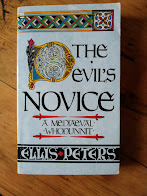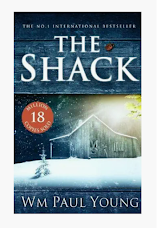The same but different by Joy Margetts
I am still relatively new to the whole book marketing thing.
I’m doing my best with varied results. I’m taking advice and trying to respond
to it. This has included trying to build an email subscriber list, writing a
personal blog, guest blogging, and of course being a ‘presence’ on Social
Media. I have even given TikTok a try - jury is out for me so far, as to
how useful it will be in actually generating interest in my books, but it is
early days.
One thing I have heard over and over is ‘What is your unique
selling point?’ Or, what does my writing offer that people are actually looking
for? And that if I ‘find my audience’ then the sales will come. My problem has
been that my books fall into a very unique genre and I’ve found it very hard to
find an audience for them. They are fiction but explicitly Christian. They are
historical fiction but are neither romance nor murder mystery, nor are they
adventure stories. There is little to no blood and gore, and definitely no
explicit sex. They are simple stories of ordinary people finding hope and
redemption through their experiences, and the relationships they form on the
way. Against an authentic historic background. So how do I find my audience?
One piece of advice I heard recently, I found really
helpful. That is to compare my book to other, perhaps more well- known books
that are similar to mine. And then to highlight the differences. This will help
to define exactly what my unique selling point is. It might be a way of also
finding my unique audience. After all – the people who like their books might
like mine? Well, it’s a dream scenario worth pursuing.
So I have chosen five books to compare with The Healing.
You might know some of them. And for each I have highlighted how my books are
similar and how they differ.
Similar: set in a medieval monastic
community and character driven
Difference: no murders
Difference: action does not revolve around
fictionalising or retelling known historical accounts
Here be dragons by Sharon Penman
Similar: paints a believable picture of
life in medieval Wales under the rule of Llewellyn the Great
Difference: a completely fictional story
that only makes references to the great Prince (although he does appear
briefly)
Redeeming Love by Francine Rivers
Similar: a redemptive story of a broken
individual being healed and restored by the love of God
Difference: not based on a biblical story,
but on my own story. Set in an earlier period of history
Similar: based on my own experience of suffering and the revelations about God and His character that got me through that journey
Difference: set in the past – in medieval
Wales. Not so challenging as to fundamental beliefs about God.
Perhaps
this is an exercise you could do? Or perhaps you have already done similar. Do
you know how to describe your books to others using other books as examples?





Comments